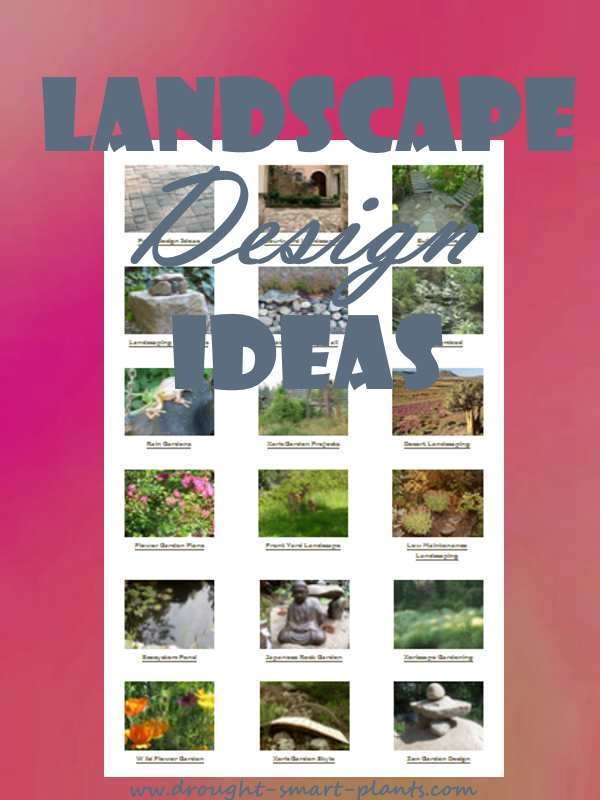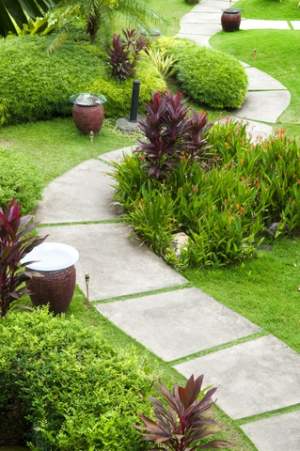Inspiration for your ideal Xeriscaping
It’s sometimes hard for garden designers to envision a starting point for a new xeriscape garden or find great landscape design ideas. I am continuously looking through magazines for garden ideas which I clip out and save in my idea book.

Some of my favorite books in my library also give me inspiration for gardening and landscaping ideas.
Images of gorgeous gardens to inspire and motivate you in your research – much more so than just descriptions.
Landscape designer and contractors can take your ideas, and make them come true.
Lists of plants, procedures for installing hardscapes, written treatises on pest control, building garden pergolas, and much more were published in books from centuries ago; luckily, we now have access to digital photos freely published on the internet; the sky is the limit.
Create your dry landscaping plans using some of these landscape design ideas.
The first step is to analyze the style, based on the design of the dwelling and any other structures. Match the style of the garden to the buildings, in the same way that beautiful jewels shine more in the appropriate setting.
Cohesiveness is the key to good landscape design. Knowing which plants prefer which conditions and planting those together is one way to have a theme that’s easy to maintain. The heights of the mature plants, and the way they grow is key to having healthy and happy plants.
A cottage style house would be enhanced by a design based on curving lines, such as a natural garden.
Formal designs based on a geometric shape such as a knot garden or potager garden enhances the look of a Tudor style house. A modern house would suit a simple geometric shape.

Landscape design ideas can come from something as simple as the shape of a sea shell, or a piece of driftwood.
Dry landscaping can be derived from any source of inspiration and translated from other styles of gardening.
Garden design ideas are all around us if we just look. Allow your inner eye to see the beauty and minimalism of simple shapes and translate it to the landscape.
Sometimes a photograph of a shape is easier to convert into a design than the actual object, so pore over garden pictures to find these motifs.
Many garden design ideas seem so basic that we discount them, but the very best classic designs are simple geometric shapes, combined to form other shapes, or simply a sinuous line evoking a shape from the natural landscape such as an ocean wave or a windswept tree.
Taking such a simple shape and repeating it as your garden design motif can give a look of classic elegance to your garden. Repetition of one element in different materials will emphasize an important feature, but random use of several in juxtaposition will simply appear chaotic.
For the best effect, stick with one type of hardscaping material for steps, walls and walkways, such as stone or concrete with small amounts of similar coloured gravel, for instance. Make your own pavers with soil cement for a hand crafted vibe.
Brick and lava rock will blend easily with their similar colours, and wood and shredded bark combine well.
Think of these materials as the canvas against which you will display the true stars – the plants. Pare down the landscape design idea to one motif for its most sophisticated and clever use. Landscape design ideas are everywhere if we just see them.
In today’s busy world, being blinded to beauty is easy; train your eye to see simple and elegant shapes to use in your garden design.



























